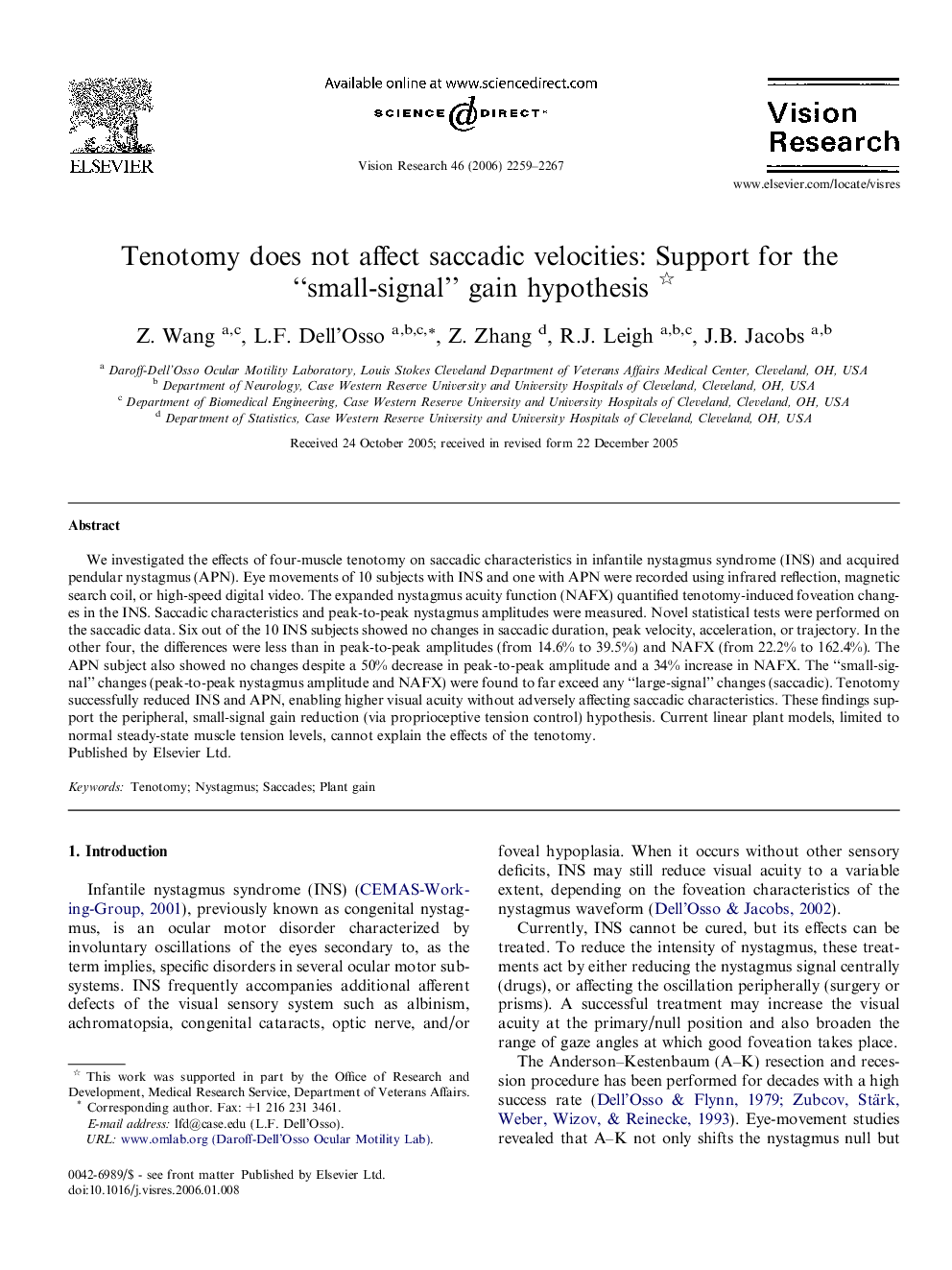| کد مقاله | کد نشریه | سال انتشار | مقاله انگلیسی | نسخه تمام متن |
|---|---|---|---|---|
| 4036681 | 1263626 | 2006 | 9 صفحه PDF | دانلود رایگان |

We investigated the effects of four-muscle tenotomy on saccadic characteristics in infantile nystagmus syndrome (INS) and acquired pendular nystagmus (APN). Eye movements of 10 subjects with INS and one with APN were recorded using infrared reflection, magnetic search coil, or high-speed digital video. The expanded nystagmus acuity function (NAFX) quantified tenotomy-induced foveation changes in the INS. Saccadic characteristics and peak-to-peak nystagmus amplitudes were measured. Novel statistical tests were performed on the saccadic data. Six out of the 10 INS subjects showed no changes in saccadic duration, peak velocity, acceleration, or trajectory. In the other four, the differences were less than in peak-to-peak amplitudes (from 14.6% to 39.5%) and NAFX (from 22.2% to 162.4%). The APN subject also showed no changes despite a 50% decrease in peak-to-peak amplitude and a 34% increase in NAFX. The “small-signal” changes (peak-to-peak nystagmus amplitude and NAFX) were found to far exceed any “large-signal” changes (saccadic). Tenotomy successfully reduced INS and APN, enabling higher visual acuity without adversely affecting saccadic characteristics. These findings support the peripheral, small-signal gain reduction (via proprioceptive tension control) hypothesis. Current linear plant models, limited to normal steady-state muscle tension levels, cannot explain the effects of the tenotomy.
Journal: Vision Research - Volume 46, Issue 14, July 2006, Pages 2259–2267